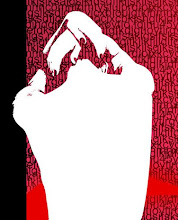Urbanisation of Hyderabad has taken its toll on a lifestyle that once bound diverse communities.

This anecdote narrated by well-known Urdu writer and academic, Zeenat Sajida, mirrors the traditional composite culture of erstwhile Hyderabad.
Has this refined Deccani culture as typified by the Hyderabadi way of living, become passé in the wake of globalisation and urbanisation, coupled with the expediency of electoral politics? Some of the prominent Muslim intellectuals of the city feel so.
Rather wistfully and with nostalgia , they recalled that the fundamental feature, which distinguished the Deccani culture, was its composite nature - a milieu in which the rulers and the subjects alike, while retaining their identity, respected the faith and beliefs of others. And their catholic outlook did not end by merely respecting the others' faith; they also participated with genuine warmth and affection in the festivities and other events.
"It was not culture predicated on mere tolerance. It was the culture of recognition of the right of others. It was secular in the true sense of the word. There was no difference between a Hyderabadi Muslim, Hindu, Sikh or anybody," observed eminent Urdu poet, Rashid Azur. Bonhomie, etiquette, manners, social graces, humility and simplicity were some of the attributes, which constituted the `zeitgeist' or the spirit of the times. The frenetic pace of urbanisation has transformed the cultural landscape of the city so completely that these values are rapidly becoming extinct.
Reflecting on the egalitarian attitude with which they were brought up, Rashid said, "We used to play with our servants. Chirkhi billa, goliyaan, lone paat, gilli danda, kabbadi were some of the games fondly played by all. The respect for elders was equally pervading and we always used to address our driver as `Khan Saab'. Another aspect of the Deccani way of living, which was missing now was that the family of servants used to live for generations in the house of their masters. They used to be part of the household ," he reminisced.
"I think the Khuloos (affection) and friendship of those times is missing now," rued Zeenat Sajida. Such was the extent of cross-cultural interaction and togetherness that it influenced even the cuisine. Yet another feature was that a majority of Muslims avoided eating beef. "The culture was almost similar in the houses of Rajputs, Kayasths and Muslims," she added. Every house had an open courtyard and a "Dalaan" (an open living room), and the size of Dalaan more or less reflected the social status of the householder, she added.
For Prof. S. Sirajuddin, a retired professor of English from Osmania University, those were the times of bonhomie, gracious living, love of poetry and good food. "Poetry circulated in houses and aired in mushairas. It went deep into the psyche of Urdu speaking people," he recalled.
Hyderabad had high quality mushairas which have become a thing of past. Outside Delhi and Lucknow in the North, Hyderabad was the most important centre of Urdu. Mushaira was a major cultural and social event in which the nobility and the commoners constituted a very appreciative and discerning audience. The city attracted poets like Daagh Dehelvi, Josh Malihabadi, Fani Badayuni and Fasahat Jung Jaleel among others.
Another retired English Professor, Taqi Ali Mirza, said that the preservation of temples, mosques and monuments like Ajanta and Ellora received lot of attention from the rulers, who used to give generous grants.
"Very munificent grants were given by the Nizam to non-Muslim universities like the Benares Hindu University and the Bandarkar Research Institute, Pune." In matters of dress too, there was lot of commonality between Hindu and Muslim students on the Osmania University campus. The Hindus used to wear a cap, which was compulsory and a sherwani or a coat. There was no restriction on wearing dhotis. "I miss that amity and fellow feeling now. There is feeling of alienation among the communities due to political reasons...this is very sad," he lamented.
Former Director of Salar Jung Museum, M. L. Nigam said the Hyderabadi tehzeeb was a gracious way of living, which had nothing to do with religion. "When we talk of Hyderabadi culture, it does not mean it is the culture of Muslims or Hindus. The whole problem today is that we are confusing culture with religion."
Citing another famous incident which reflected the secular culture, he said the sixth Nizam, Mahbub Ali Khan worshipped River Musi and offered a sari after it flooded half the city in 1908. "The greatest merit of that culture was that it integrated the people, irrespective of their caste and creed."
"Life was essentially easy-paced and stress-free," observed Ghani Nayeem, Urdu scholar, who said that nothing reflected this better than the present-day marriages, which have none of the refinement, grace and elegance of old Hyderabadi marriages. Old world ceremonies like "chakki ka rasm" in which seven suhagans (married women) ground turmeric in a grinding stone have already become extinct. How many young people today know of a Mushata (match-maker) or a Mirasan, who used to sing wedding songs, he queried.
A revival of that great culture and tradition might be the answer to Hyderabad's eternal peace and harmony

No comments:
Post a Comment